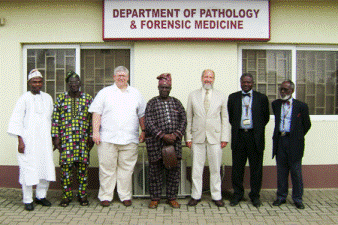Natural Resources, School of

Karl Reinhard Publications
Document Type
Article
Date of this Version
2008
Citation
J. Parasitol., 94(6), 2008, pp. 1418–1420
Abstract
Oocysts attributable to Eimeria macusaniensis Guerrero et al. 1971, were found in coprolites and in archaeological sediments dating to the Holocene of Patagonia, Argentina. By means of a nonparametric regression using a generalized additive model, a significant relationship was found between the size of the oocysts and their antiquity. Specifically, a reduction in oocyst size over time was discovered, probably due to a parasite response to host replacement, to an extinct eimeriid species common during the Pliestocene–Holocene transition, or to environmental changes known for the Holocene. Explanations regarding coevolution between parasites, hosts, and paleoenvironmental conditions are discussed herein.


Comments
Copyright American Society of Parasitologists 2008. Used by permission.